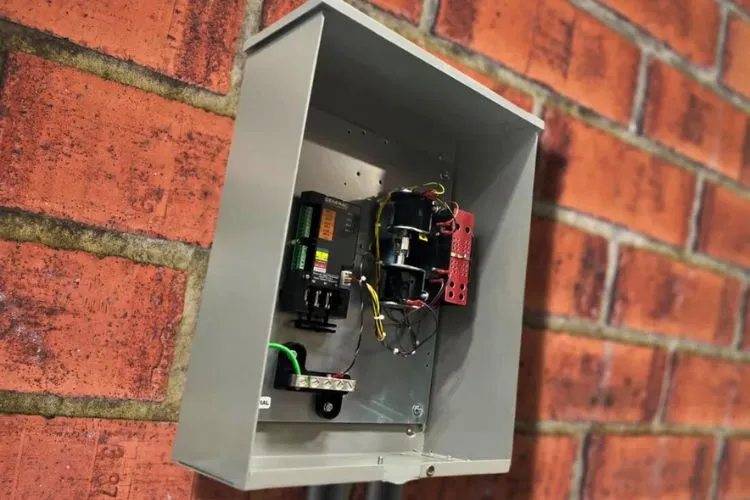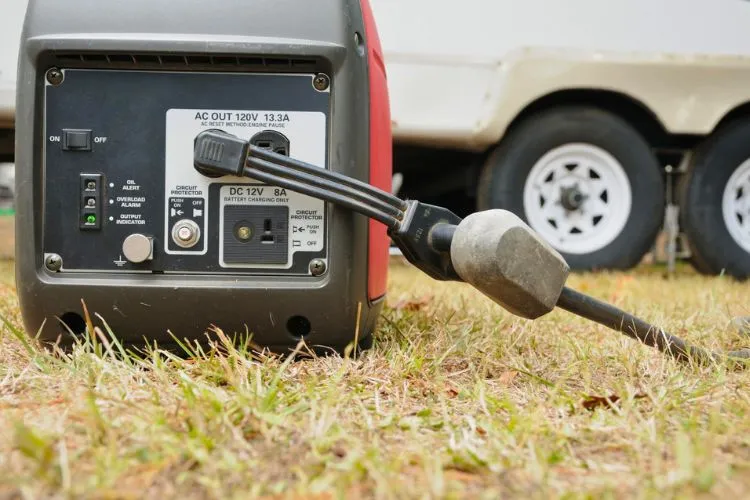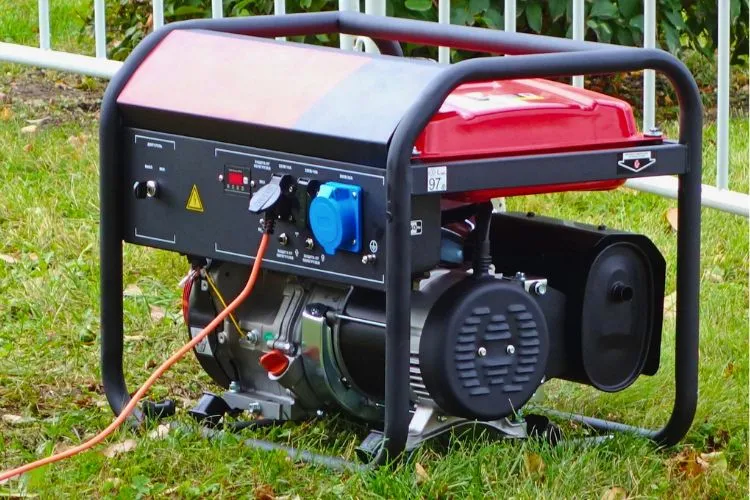When unexpected power outages occur, having a backup power source is not just a convenience; it’s a necessity for safety and comfort.

Typically, a transfer switch is used to safely connect a generator to a home. However, there are alternative methods to establish this connection without a transfer switch.
This article will explore these methods, emphasizing safety, efficiency, and compliance with local electrical codes. Note, it’s strongly advised to consult and hire a licensed electrician for such installations.
Understanding the Basics
What is a Transfer Switch?
A transfer switch is a device that allows safe switching between utility power and generator power.
It’s designed to prevent electrical back feed, which can be dangerous and is illegal in many areas.

There are pros to using a transfer switch, like enhanced safety and the ability to power hardwired appliances directly. The downside includes the cost of purchase and installation.
Why Skip the Transfer Switch?
Omitting a transfer switch may be considered due to cost savings or when needing a quick, temporary solution during an emergency.
However, this should only be done within legal constraints and safety guidelines.
Preparing to Connect Your Generator
Generator Safety Check
First, ensure your generator is suitable for home use and has been maintained correctly.
Always place the generator outdoors to prevent carbon monoxide poisoning, ensuring it is far away from windows, doors, and vents.

Tools and Materials Required
You will need basic tools like screwdrivers and pliers, along with electrical tape for insulating connections.
Critical materials include an interlock kit suitable for your breaker box and a power inlet box.
Assessing Power Requirements
Calculate the total wattage of the appliances and devices you need during an outage. Focus on essentials like refrigerators, lights, and heating systems.
This will guide you in selecting the appropriate generator size and understanding which circuits to manage.
How to Connect a Generator to a House Without Transfer Switch?
Selecting the Right Generator
Choose a generator that can handle the load of your critical appliances. Consider a unit with slightly higher capacity than your calculated needs for some flexibility.
Installing a Power Inlet Box
Install a power inlet box outside your home. It should be easily accessible and close to where you will operate your generator. This box will connect to the indoor electrical panel.
Setting Up an Interlock Kit
An interlock kit prevents your generator from backfeeding to the grid, which could be dangerous. Install the kit following manufacturer’s guidelines.
This device slides to block the main breaker and allows the generator breaker to turn on, and vice versa.
Connecting the Generator to the Power Inlet Box
Use a heavy-duty, outdoor-rated cable to connect the generator to the power inlet box.
Ensure that all connections are secure and that the cable is rated for the load and outdoor use.
Precautions When Energizing Your Home’s Panel
Once connected, power up essential circuits one at a time to avoid overloading. Always turn off the utility main breaker before switching
on the generator breaker to avoid dangerous situations.
Testing and Maintenance
Test your setup by simulating a power outage. Check if all connected loads receive power and adjust as necessary.

Maintain your generator according to the manufacturer’s instructions, and inspect your setup regularly to ensure safety.
Legal Considerations and Permissions
It’s vital to check with local building authorities for any required permits or inspections.
Following these regulations can protect you from legal issues and ensure that your setup meets safety standards.
Alternative Power Backup Options
- Portable Generators: Ideal for temporary power needs and small appliances, portable generators are versatile for short-term outages. However, they may be loud, emit fumes, and typically require frequent refueling.
- Inverter Generators: These function with lower noise and are preferable for electronics due to their stable power output. They are more fuel-efficient and produce fewer emissions but are often more costly and provide less power than conventional generators.
- Solar Power with Battery Backup: An eco-friendly option that harnesses the sun’s energy to provide a continuous power supply. While the upfront investment is significant, it offers long-term savings and is exceptionally reliable during prolonged outages, reducing dependence on fossil fuels.
Advantages and Disadvantages of Not Using a Transfer Switch
Pros
- Initial Cost Savings: Foregoing a transfer switch can reduce upfront equipment costs since transfer switches can be expensive.
- Prompt Setup: During emergencies, connecting a generator directly to the home’s system might offer quicker setup without transfer switch installation.

Cons
- Increased Safety Risks: Direct connections without a transfer switch can lead to backfeeding, posing electrocution risks to utility workers and the public.
- Non-compliance Risks: It’s often against electrical codes to connect a generator without a transfer switch, risking legal penalties and voided insurance.
- Power Management Challenges: Without a transfer switch, managing which circuits receive power can be more complex, possibly overloading the generator or leaving critical areas without power.
Frequently Asked Questions (FAQs)
Can I legally connect a generator to my house without a transfer switch?
Check local codes. Some areas allow it with certain precautions like using an interlock kit.
What are the dangers of connecting a generator without a transfer switch?
The primary risk is backfeeding electricity into the grid, which can endanger utility workers and others.
How often should my backup power setup be tested?
Test it every few months or as recommended by the manufacturer.
Can a power inlet box be used with any type of generator?
It must be compatible in terms of power rating and connector type.
What should I do if my electrical panel does not have room for an interlock kit?
Consult a licensed electrician. You may need a sub-panel or different generator setup.
How do I know if my generator is powerful enough to run my household appliances?
Calculate the total wattage of your essential appliances and compare it with the generator’s output capacity.
Conclusion:
Connecting a generator to your house without a transfer switch is feasible but requires careful consideration of legal and safety aspects. Always prioritize safety, and involve professionals when necessary.
This detailed guide provides the essentials on how to connect a generator to a house without a transfer switch. Always remember, safety first, and when in doubt, consult with a professional.
